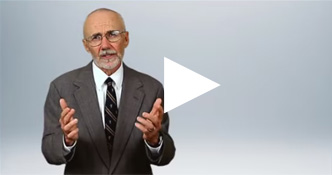How to Solicit in a Campaign
by William J. Moran, J.D., M.S.Ed.
The principle of sequential solicitation is a simple but critical secret to success.
Always solicit from the top down and from the inside to the outside. Solicit
your best and closest prospects first. Then move downward and outward to those
who are your next best prospects.
Eventually you will reach those who are farthest removed from your organization and prospects for the smallest gifts. The last phase of the campaign is generally a “catch all” mail solicitation to solicit these
individuals.
That is all there is to it. Campaigns are a “group process” so peer expectations play
a large role. Prospects will watch what others do. Make sure that you have your
biggest possible gifts up front as a standard for the others to emulate. If you do
not, you run the risk of the smaller givers setting the standard for the major gift
prospects. This is a recipe for disaster.
Because up to 90% of your goal will come from your top 10% of donors, the early
leadership calls are very important. Make sure they are well planned! Follow these concepts for successful solicitation:
- Adherence to the principle of face-to-face solicitation. For top gifts
to any campaign there is no substitute for face-to-face contact. The telephone should be a tool only used for getting the appointment.
- Solicitors should make their own commitment first. It is very
difficult to ask someone else to do something that you have not done. It is
best to send out individuals who have already committed to the size of the
gift that you are seeking. This makes for a natural approach that is very
effective, “I hope you will join me in making a leadership gift.” If it is not
possible to send out individuals who have already given at that level, then
try to ensure that the solicitor has committed at a level proportionate to his or her ability to give.
- Be prepared – “Knowledge is power.” Background information about
the prospect’s linkages with the organization, common interests with the
organization, and giving history provides the underpinning for the amount
and purpose of the gift request. Equally important, this background
information gives the solicitor a comfort level in approaching the prospect.
The solicitation then simply becomes a presentation of a well thought out
proposal that the prospect should have interest in funding.
- “Kick yourself aside and let your cause walk in.” Make sure that
those soliciting have had time together to share their reasons for supporting your organization and the importance of the campaign. They need to understand the case for the campaign. They should hear and have a chance to express the passion and enthusiasm for what the campaign will accomplish. They can then use that understanding and enthusiasm to motivate themselves to solicit, not for themselves, but for the greater good.
- Who should go on the appointment. People give to people they know,
trust, and respect. Therefore, at least one of the solicitors should be a peer of the prospect, if possible. It usually is more comfortable for everyone if two individuals participate in the solicitation. One person is able to listen while the other is talking and then join in to complement the discussion. Often, a staff person with the knowledge to answer detailed questions, combined with a volunteer peer of the prospect make a good team. On the other hand, planned gift calls on older prospects often are best made by a single staff person who has the primary relationship with the prospect.
- The solicitation itself. There is no magical formula or special words to
use. It is best to be who you are. If you are nervous then be nervous.
However, using the words “I hope you will consider…” seems to be effective. It is nearly always best to ask for a specific amount. The ability to listen to the prospect’s reaction is usually as important as how you make the solicitation. Leave a written request with the prospect to review after you are gone or mail one following the appointment.
- Follow up. Most often, the solicitation ends with the prospect’s agreement
to “consider” the request. Follow up then becomes important. If there is no
follow up, then most likely the gift will never be closed. Keep in front of the
prospect by follow up phone calls, notes and providing additional
information. Additional meetings may be needed. However, do not make the prospect feel he or she is being forced to make a gift. You are simply looking for a decision as expeditiously as possible.
Bill Moran, The Moran Company, specializes in nonprofit executive searches
for executive directors, fundraising staff and other top nonprofit leadership.
www.MoranCompany.com
© 2008 The Moran Company
“We find great nonprofit executives”
Posted in Fundraising Articles
Subscribe
Join more than 10,000 nonprofit professionals, community leaders and board members who receive e-mail updates from The Moran Company.






